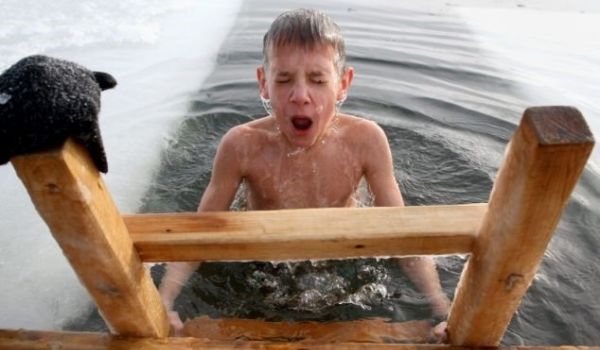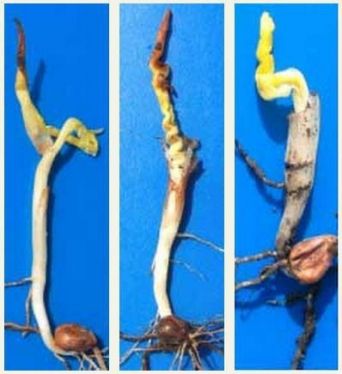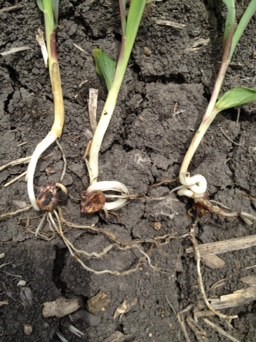Seed in Cold Soil – Imbibitional Chilling

“Rich on Agronomy” is an agronomy column from Peterson Account Manager Rich Larson.
Imagine jumping into a lake in early spring. The cold water takes your breath away and cools down your muscles, making movement difficult. If you stay in the water too long, hypothermia could set in. Water temperatures less than 40-45 degrees have a similar effect on corn and soybeans. In fact, newly planted seeds can get their own form of hypothermia.
We really needed rain, and got a slow, soaking rain. What we didn’t need were the cold temps (and snow!) that followed, especially for the fields that were planted right before the weather front.
Cold, wet weather puts a lot of stress on corn seed. The first three days after planting are the most critical for the corn kernel. The kernel swells normally but when it takes in cold water, it can split, damaging the radical and seminal roots. This condition is called imbibitional chilling (absorbing cold water).

Common symptoms of cold damage during imbibition and seedling emergence
Photo courtesy: Purdue University
When imbibitional chilling occurs, the mesocotyl or shoot can respond abnormally, growing down, sideways, or in a corkscrew pattern. After the mesocotyl elongates, it begins leafing out, even if it hasn’t reached the surface yet. The end result can create uneven stands and stand reductions.
I found these corn seedlings on wet, cold, sandy soil last year. Note the partial “corkscrew” mesocotyls. These were the lucky ones. They emerged, but very unevenly. Some did not germinate at all due to cold, wet conditions, and others leafed out underground.
Many corn fields were planted prior to the rain and may not be affected, but soybeans were in the peak of planting and can suffer from imbibitional chilling as well. Adam Spelhaug, our Agronomy Lead, says, “The first 6-24 hours after planting are critical for soybeans. These dry seeds absorb water like a sponge. If that water is cold (less than 45 degrees F), it can disrupt membrane integrity in the seed, leading to reduced emergence and increased pathogen development. Seeds that swelled early in warmer soils should be fine.”
Keep an eye on newly planted fields, watching for unevenness or lack of emergence as compared to intended stand. While final corn yields are very sensitive to stand establishment, soybeans also have limits on compensating for thin stands. If you have a severe stand loss issue with either crop, get a second opinion from your dealer and seed company to verify the severity.
While we didn’t anticipate a “polar plunge” for our crops, planting progress is on track. We still have time to make corrections if need be.




